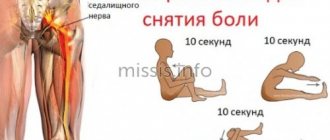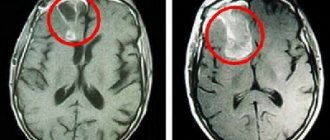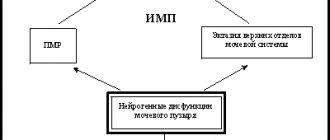Sciatica is a pathological condition that is accompanied by acute pain of varying intensity in the lower back and buttocks.
The sciatic nerve is responsible for the sensitivity of the legs, and its pinching causes the appearance of an intervertebral hernia in the lumbar spine.
This situation can be avoided if you do not ignore the pathology and its prevention.
To do this, you need to perform special physical exercises .
They relax painful areas and eliminate pain by stimulating blood supply to the affected area.
What is sciatica?
This disease is a syndrome manifested by acute pain in the area of the sciatic nerve . At the site of the nerve itself or in the lower back, compression of the spinal cord roots occurs. There are many reasons for pinched nerve endings in the spine, and therefore the manifestations of the syndrome are very diverse.
The term sciatica refers to a syndrome, not a disease. The pathology itself is called lumbosacral radiculitis. Depending on the causes of manifestation, there are other options for the name of sciatica: radiculopathy, radiculoischemia.
Most people do not know about sciatica, its symptoms and treatment. The human body is a complex mechanism that consists of tissues and many nerve networks.
The sciatic nerve is the longest . It is formed by 5 pairs of spinal cord roots. If even one gets pinched, rather unpleasant symptoms immediately appear. This compression of the nerve ending is called sciatica.
The vagaries of the sciatic nerve
Summer is a time of activity: apartment renovation, gardening chores, swimming, badminton, cycling... The list of summer worries and joys related to physical activity is truly inexhaustible. But sometimes unusual efforts, working in an uncomfortable position, or cooling can cause damage to the sciatic nerve.
Typical signs are pain in the buttock, spreading along the back of the thigh and lower leg and sometimes reaching the foot, numbness of the skin of these areas and weakness (up to paralysis) of the leg muscles, as well as sharp pain and involuntary muscle contraction when, during examination, the doctor tries to lift and straighten the leg of a patient lying on his back. All these symptoms are due to the functional characteristics and location of the sciatic nerve, which starts from the sacral nerve plexus, passes under the muscles of the buttock through the back of the thigh, and almost reaching the popliteal fossa, bifurcates into two descending branches. The sciatic nerve provides cutaneous sensitivity to the corresponding areas, conducts motor impulses to the muscles that extend the torso and thigh, flex the lower leg and lift the foot up.
Causes causing the painful condition
sciatic nerve
The most common of them is compression . Symptoms look different depending on what level it occurs and what causes it. How does the disease develop when one of the spinal roots of the sacral nerve plexus is compressed? If the cause is a herniated protrusion of the intervertebral disc, sharp pain suddenly occurs, aggravated by movement and coughing. At the same time, during the first day, disturbances in skin sensitivity and muscle weakness increase. The root, compressed by a thickened ligament or bone growth due to osteochondrosis, gradually gives increasing pain and numbness. Muscle weakness occurs much later; with advanced damage, muscle atrophy is possible.
Compression of the sciatic nerve by muscles is called carpal tunnel syndrome. It can be caused by certain diseases of the spine and joints, injuries, flat feet, and even unsuccessful injections into the buttock. Manifestations of carpal tunnel syndrome vary from pain in the buttock to burning pain in the sole of the foot and the inability to control the movements of the foot.
Injuries to the sciatic nerve (bruises, ruptures, puncture and incised wounds) are usually accompanied by moderate pain, but disrupt the transmission of motor impulses. They can lead to muscle atrophy, paralysis, as well as dry skin and trophic ulcers on the legs.
A number of diseases that disrupt metabolism can disrupt the functioning of the sciatic nerve - these are diabetes mellitus, some diseases of the thyroid gland, and various poisonings.
Caused by the herpes virus , shingles sometimes causes severe pain and blistering rashes along the sciatic nerve.
Modern diagnostic methods make it possible to accurately determine the causes of trouble. First of all, as a rule, they resort to radiography of the lumbosacral spine. It allows you to assess the condition of the vertebrae and identify bone growths. Information about the functioning of intervertebral joints is provided by radiography with functional tests (flexion, extension). In some cases, radiography is performed with the introduction of a contrast agent into the spinal canal.
Computed tomography allows a detailed examination of not only bone structures, but also intervertebral discs. It is indispensable in the diagnosis of disc hernias, as well as tumors and traumatic injuries. Magnetic resonance imaging allows you to “see” the spinal cord and predict its viability when compressed. Electromyography allows us to judge the nature of the damage to the sciatic nerve and the features of the process occurring in it. This method consists of studying the bioelectrical activity of muscles under the influence of different types of stimulation.
Treatment of sciatic nerve lesions is, first of all, elimination of the damaging factor. For small herniated intervertebral discs, they usually resort to drug therapy. Its goal is to improve blood circulation, relieve inflammation, swelling and painful muscle spasms. When acute symptoms are eliminated, treatment is continued with physical and manual therapy, acupuncture, and electrical muscle stimulation. Therapeutic gymnastics and traction are also useful.
With massive disc herniations, when the functions of the limbs are grossly impaired, surgical treatment becomes necessary. Recently, our clinics have become able to perform it using endoscopic technology. Such operations are low-traumatic and allow patients to get back on their feet already on the third day after surgery. Treatment is carried out in approximately the same way when the spinal root is compressed by bone growth due to osteochondrosis.
Neuromuscular tunnel syndromes are treated mainly conservatively. Blockades, manual therapy, wearing special belts and orthopedic insoles in combination with taking anti-inflammatory and decongestant drugs, as well as drugs that reduce excessively high muscle tone, can achieve success.
Inflammatory damage to the vertebrae and intervertebral joints requires not only the fight against inflammation, but also antibacterial therapy if the cause of the inflammatory process is an infection that has invaded the body. For tumors of the spinal cord and its roots, surgical treatment, radiation and chemotherapy are used.
The degree of restoration of sciatic nerve function depends, first of all, on the severity and duration of its damage. Many complications and consequences can be avoided if you consult a doctor promptly and start treatment as early as possible.
How to prevent damage to the sciatic nerve?
First of all, take care of your spine (in particular, learn how to lift weights correctly). It is especially important to monitor its condition for those who belong to the so-called risk group: drivers, car service workers, athletes, and those who face heavy physical labor. Regular visits to the pool and physical education (at least morning exercises) will help you avoid many troubles.
author: Irina Kudryavtseva
consultant - Kirill Shlyapnikov
Basic principles of treatment
Complex therapy not only relieves pain, but also eliminates the causes that provoked the pinched nerve.
During the period of exacerbation of sciatica, when the pain is very severe, symptomatic treatment is carried out . To eliminate pain, various painkillers (Diclofenac, Ketanov), muscle relaxants and hormones are used. Antioxidants and vascular agents will help speed up the end of the attack, improving blood circulation and restoring the normal functioning of the affected tissues.
During remission, the pain disappears, but tissue nutritional disturbances and difficulties with movement remain . Therefore, maintenance therapy is necessary during this period.
For this purpose, physiotherapeutic procedures : massage, magnetic therapy, diadynamic currents, darsonvalization. They relax the muscles and eliminate pinched nerves, allowing for complete healing. These procedures eliminate recurrences of painful attacks.
Maintenance therapy also includes taking metabolic drugs, vitamins and antioxidants that restore blood microcirculation. If sciatica is caused by an infectious disease, then antibiotics may be used.
As a last resort, surgical treatment is performed. For example, with a hernia or tumor in the spine. Surgery is necessary if sciatic nerve compression has caused defecation disorder or urinary incontinence.
Features and symptoms of pinching
The main cause of pain is wear and tear of the intervertebral discs and vertebrae. They shift and begin to put pressure on the nerve roots. People over 40 years of age are at risk. However, pinching of the sciatic nerve also occurs in young patients over 25 years of age.
A vertebrologist explains that lower back pain is often not a symptom of pinching.
Vertebrologist's comment
“Pinching” (compression) of the sciatic nerve is more common in men, which is associated with increased physical activity, prolonged sitting (drivers and representatives of other professions), and improper performance of movements, especially when lifting weights.
In women, the disease usually manifests itself during childbirth and the postpartum period and is associated with a shift in the center of gravity, an increase in pressure inside the pelvic cavity, as well as changes in metabolism during this period. Lapaev Sergey Vladimirovich
Depending on the degree of pinched nerve, the pain can be either acute, unbearable, or dull, aching.
Are you not in Yekaterinburg?
Get a remote consultation with a doctor: make an appointment with a vertebrologist online.
Come get treatment in Yekaterinburg: medical tourism is profitable and convenient!
Symptoms of a pinched nerve
- pain in the back of the leg, it gets worse with movement and walking
- difficulty walking
- leg weakness, numbness, tingling
- sharp pain when shifting body weight to one leg
- pain in the buttock area + sometimes in the lumbar region
- decreased muscle tone
If inflammation is associated with a pinched nerve, signs such as:
- edema
- redness
- increase in body temperature
- pain when urinating
A characteristic feature of pain due to a pinched nerve is that it disappears at rest and appears under any stress.
Exercise therapy for sciatica
Patients often ignore or underestimate prescribed exercises for sciatica. Many patients find that medications are more effective than therapeutic exercises. This opinion is clearly erroneous.
A set of properly selected exercises improves blood circulation, relieves inflammation and activates metabolism . Therapeutic exercises speed up recovery, and pain can be relieved in a few days.
In addition, other spinal problems that may cause sciatica are eliminated. All exercises are performed only in the absence of pain; during periods of exacerbation, training is strictly prohibited. The main thing is to do the exercises correctly.
For gymnastics to be effective, you should adhere to certain recommendations:
- It is better to master the complex under the supervision of a doctor.
- Exercises will be beneficial if done twice a day.
- All exercises for sciatica are done on a hard surface.
- During an exacerbation of the disease, breaks are allowed, but then you need to continue performing the complex, taking into account your state of health.
- Gymnastics should be done regularly. If there is no desire or strength, then you should not cancel the training, you need to do at least 2-3 exercises at half strength.
If the disease is in the acute phase, then the exercises are not performed until the pain disappears.
Physical activity is also undesirable in some pathologies:
- Mental disorders.
- Epilepsy (frequent seizures).
- Serious spinal injuries.
- Oncology.
- Heart diseases.
- Viral infections that are accompanied by fever.
Due to these restrictions, you should first consult a doctor or undergo a full examination.
Contraindications for exercise therapy
There are a number of contraindications for gymnastics when the sciatic nerve is pinched:
- mental disorders;
- frequent attacks of epilepsy;
- complex spinal injuries;
- oncological diseases;
- heart failure and other heart pathologies;
- viral infections that are accompanied by fever.
It is necessary to perform exercise therapy with a preliminary warm-up. Also, do not immediately perform many repetitions of the same exercise. To begin with, 2-3 repetitions are enough, then you can increase them (the exact load should be calculated by the doctor).
Exercise technique
If you perform the exercises correctly, gymnastics can completely replace drug therapy. All movements of the complexes are physiological and natural, so there will be no fatigue or sprains .
There are many exercises for inflammation of the sciatic nerve, and they are divided into certain groups.
In a lying position:
- Pulling your knees to your chest while lying on your back. Perform at least 10 times.
- Lying on your side, stretch your legs as far as possible. Then bend both legs and pull them towards your chest, then straighten. Do the same 10 times.
- Lie on your stomach. Palms near shoulders. Straightening your arms, stretch your back as much as possible, looking up. Make a short delay and return to your previous position. For beginners, 5 approaches will be enough, but over time you can increase to 15.
- Lie on your back. Pull your feet towards your buttocks. Arms crossed over chest. As you inhale, you should raise your torso, and as you exhale, lower it. Performed 15 times.
Sitting:
- Sit on the floor and stretch your legs forward. Spread your arms to the sides (at shoulder level) and bring them back, trying to connect your shoulder blades. Movements should be made smoothly, without jerking. Repeat at least 5 times.
- From a sitting position (arms extended upward), slowly lie on your back. Then raise your legs to a right angle. The lower back should not lift off the floor, as this will place excessive stress on the spine.
- Sit on a chair. Place your hands on the back of your head and make slow turns with your body.
Standing:
- Feet shoulder-width apart, back as straight as possible. Raise your right hand and lean to the left. The arm and torso should be parallel to the floor. Then return to the starting position and lean to the right.
- Hands on the belt. You need to take turns raising your straight leg. It doesn’t have to be high, you should focus on your feelings.
- Place your feet as wide as possible. Bend your knees (“rider pose”) and shift your weight to each leg in turn. This exercise improves blood circulation in the pelvic area.
All exercises are an excellent way to prevent sciatica . Regular implementation of the complex will prevent the sudden onset of a painful attack.
Video: “Exercises for pinched sciatic nerve”
Treatment
Only after receiving test results and a computer examination can the doctor determine that the patient has a pinched nerve. A comprehensive course of treatment is prescribed. If hospitalization is necessary, the doctor will issue a referral. All that is required is strict compliance with all the doctor’s prescriptions.
What does the treatment plan look like?
To begin with, the doctor prescribes medications that can relieve inflammation and eliminate pain. If the patient experiences muscle spasm, the doctor prescribes antispasmodic drugs. Tablets or injections can be prescribed as medicinal treatment.
The dose and number of days of taking the medications are prescribed by the attending physician. It is recommended to take medications to maintain intestinal microflora and strengthen the immune system. After pain has been eliminated, the doctor will prescribe exercise therapy and physiotherapy.
How to relieve pain yourself?
If an attack of pain is caused by a spasm, you can try to eliminate it on your own.
The goal is to relax the hamstrings.
The tips of your toes should be pulled upward to stretch the muscles.
You can massage the piriformis muscle and quadriceps.
Therapeutic taping is used.
Exercises to do when the sciatic nerve is pinched
Gymnastics for a pinched sciatic nerve is aimed at normalizing blood flow, strengthening the muscle frame and improving the general condition of the patient.
You need to choose exercises for sciatica that are simple, calm, measured and gentle.
You need to start with a minimum number of repetitions and increase them every day. If pain or discomfort occurs, gymnastics should be stopped.
If the sciatic nerve is pinched, it is not recommended to independently select a set of physical therapy exercises; it is better to contact an instructor.
The first set of exercises is performed on the back or stomach:
- Bend your leg, raise your knee to your chest at a calm and slow pace, hold for 10 seconds, repeat at least 5 times.
- Make a bicycle at a measured pace.
- Raise your legs as much as possible and swing them left and right, not exceeding an angle of 45 degrees.
- Position: lying on your stomach, raise your body, leaving your legs motionless. The body must be held for 5-7 seconds, then return to the starting position.
The second complex of gymnastics is performed in a sitting position:
- Sitting on the floor, use your buttocks to move forward and backward. Number of repetitions 5-7.
- Sit on a chair with a straight back, place your hands on the back of your head, make smooth body turns to the right and left, you can slightly increase the angle of rotation every day.
- We sit on the floor, hands in front of us, on the first count we bring our palms to our shoulders, on the second count we return them back.
The third set of exercises is performed in a standing position:
- Feet shoulder-width apart, as you exhale, bend your back, as if protruding your lower back, and while inhaling, perform the opposite manipulation.
- Leave your legs in the same position, raise your right arm and bend to the left. After returning to the starting position, do the exercise in the other direction.
- Standing, we perform self-massage of the lumbar area.
The number of exercises performed must be increased gradually, avoiding excessive stress on the spine.
You can watch an excellent set of exercises for a pinched sciatic nerve in the following video:
Back exercises allow you to improve your well-being with minimal effort. When performing gymnastics, it is important to listen to your body and, if pain occurs, stop the exercise.
Remember!
Only regular exercise will help cure the disease and get rid of it forever.
Yoga
Exercises have been developed that are suitable for people with this pathology. Yoga is often recommended for patients with sciatica. Exercises can improve blood circulation, develop and strengthen muscles, and correct posture.
Yoga consists of measured, smooth, calm asanas that will not harm the patient. They are aimed at stretching muscles and eliminating tension.
Important! Not all yoga poses can be performed if there is a tendency to pinched nerve bundles.
Do not start classes during an exacerbation period. “Twisting” and inverted positions should be avoided. If you have any doubts about a pose, consult your doctor.
Physiotherapy
Physiotherapy will necessarily be included in the complex treatment of sciatic nerve entrapment. It is important to understand that it is not used as the main treatment for the disease. Only an integrated approach and compliance with medical recommendations will ensure positive dynamics.
Physiotherapy includes treatment with:
- Electromagnetic and UV radiation;
- Laser therapy;
- Electrosleep;
- Hydrotherapy;
- Acupuncture.
All procedures are prescribed in a course - usually from 5 to 10 visits.
Massage
Before you go to an appointment with a massage therapist, it is important to make sure of his qualifications.
Only an experienced specialist who knows the specifics of the disease can help you.
The massage should be calm and warming. The massage therapist's movements are aimed at relieving muscle spasms, reducing pain and improving blood circulation.
To get results, you need to attend a massage course - usually it is 10 sessions.
Massage can be successfully replaced with exercises on a Drewmass massager. The effect will be better, and the procedures are carried out at home.
Exercises for acute back pain
With sciatica, lumbago (lumbago) often occurs . To relieve severe pain, there are two exercises that eliminate pain and restore motor activity.
- You need to stand at a horizontal surface, which should be at pelvic level. For example, a table or a couch. Slowly lie down on it with your body and relax well. While inhaling, inflate your stomach for 5 seconds, then exhale as much as possible. Repeat no more than 3 times.
- Take a position on all fours. The back should not bend. Relax your neck and lower your head. Inhale with your stomach (slow), hold for 5 seconds, exhale completely. After performing this breathing exercise 10 times, a person will notice how the pain recedes.
In order not to suffer from acute pain due to sciatica, it is advisable to visit the pool , take long walks, and ride a bicycle. I would recommend doing yoga, but with an experienced instructor.
Exercises according to the Bubnovsky system
To eliminate sciatica, a special complex has been developed aimed at toning the spinal muscles and normalizing joint mobility:
- "Cat" . You need to get on all fours and bend your back down as you inhale, and arch your back up as you exhale.
- "Pumping" . In the same position, do push-ups from the floor. Inhale - bend your arms, exhale - straighten them.
- "Pulling" . Lie on your back, bend your knees, and clasp your hands behind your head. As you exhale, touch your elbows to your knees, and while inhaling, return to the starting position.
- "Bridge" . Performed while lying on your back. As you exhale, the lower back rises, and as you inhale, it lowers.
What exercises are contraindicated
Therapeutic exercises for sciatica always begin with a warm-up. Then they do stretching, gradually making the movements more difficult.
What exercises are prohibited to perform with this disease? Do not approach the bar under any circumstances . Excessive stress will further compress the intervertebral discs and can completely destroy them.
What not to do:
- Tilts and turns with weight . Friction occurs between the vertebrae, and this leads to disc injury.
- It is forbidden to squat with weight if the simulator is set to a rigid trajectory of movement, which does not always correspond to the anatomical structure of the spine.
Beneficial properties of gymnastics for sciatica
Exercises for sciatica of the sciatic nerve complement the treatment complex. They are often used in conjunction with drug therapy and manual manipulation. Gymnastic exercises allow you to:
- increase the level of tissue supply with nutrients;
- remove inflammation and swelling;
- increase flexibility of joints, spine and limbs;
- strengthen muscles and tone them;
- eliminate pinched nerves in the pelvis.
The result of regular exercises is a significant improvement in the patient’s well-being and a reduction in the manifestations of the disease. However, you need to know that therapeutic exercises have a set of certain rules that should be followed if you want the maximum effect from the exercises.










